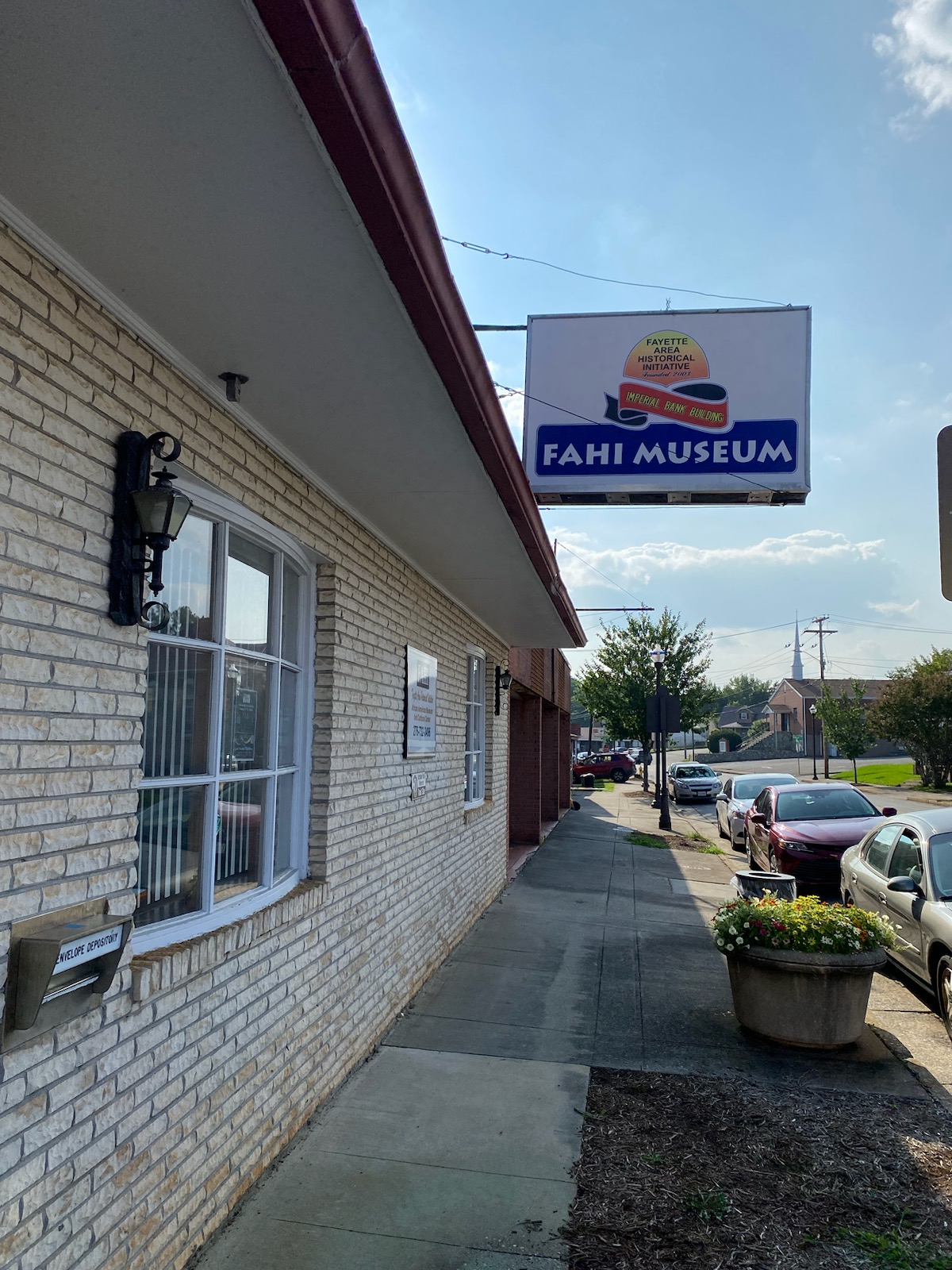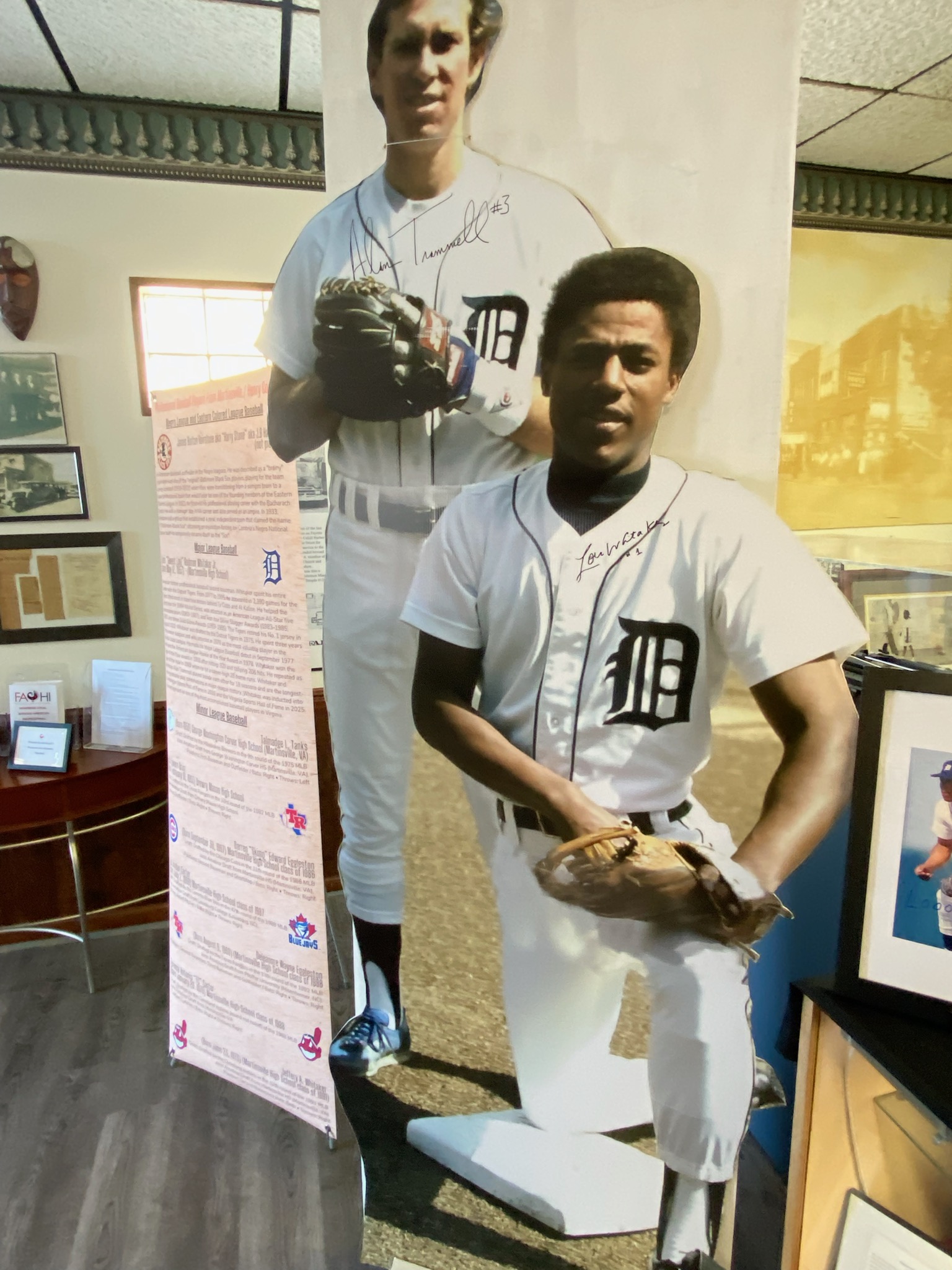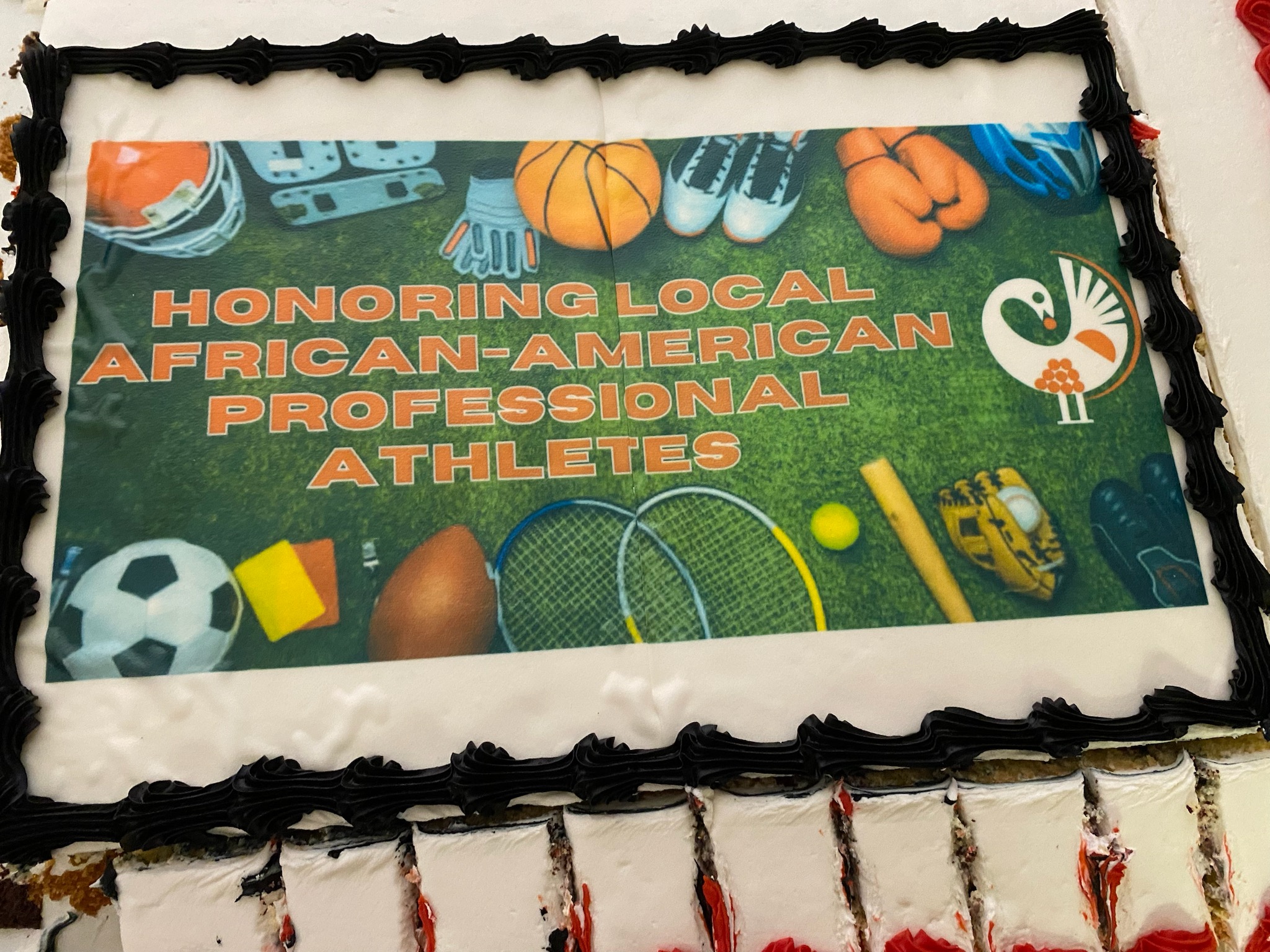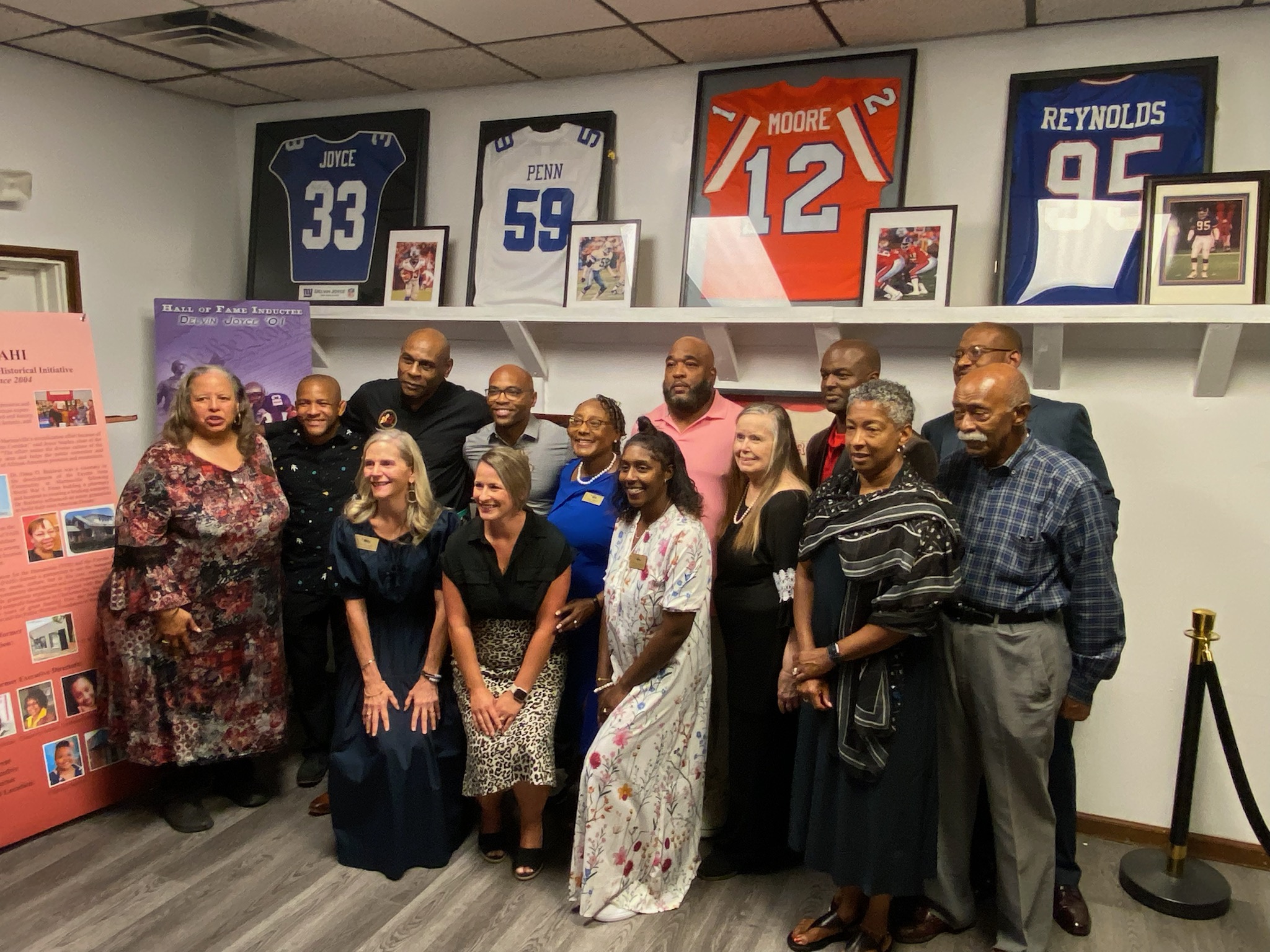Did you know James Burton Hairstone …
… Was an outfielder for two Negro Leagues baseball teams?
… Was an original member of the Baltimore Black Sox in 1916?
… Was a Negro Leagues manager and an umpire?
… Was widely regarded as one of the “brainiest” players in the game?
But perhaps more importantly, did you also know that James Burton Hairstone was a native of Martinsville?
A trip to the Fayette Area Historical Initiative museum located in the small Piedmont city is all it takes for history from more than a century ago to come alive.
The story of Hairstone, who was born in Martinsville in 1891, is part of a transitional exhibit at FAHI featuring African American athletes from Martinsville-Henry County who have reached the professional level in their respective sports.
The exhibit opens to the public Wednesday and will be located at its temporary home until mid-November.
Among the featured former athletes are some big names:
From baseball, 1978 American League Rookie of the Year Lou Whitaker.
From football, 15-year NFL veteran and Super Bowl participant Carl Hairston.
From basketball, one-time VHSL career scoring record holder and ex-Old Dominion star Odell Hodge.
From boxing, former WBC heavyweight champion Oliver McCall.
The exhibit features framed jerseys, photographs, posters, biographies, baseball bats and boxing gloves.
And just about all of it was obtained and assembled by FAHI Executive Director Charisse Hairston, a 2004 graduate of Magna Vista High School who has combined a love of sports with a passion for education.
Hairston and FAHI board of directors chair Joyce Staples had similar ideas on how nostalgia could entertain the community’s older history buffs while teaching the area’s youth a thing or two about local pride.
So Hairston set out on social media on April 16, asking for help.
Then she went to work.
Less than four months later, the exhibit is ready for the public.

The museum, located in a former Imperial Savings and Loan bank building, has a permanent display that includes vast troves of information chronicling prominent African American pioneers in business, medicine, education, religion, military service and the arts.
Martinsville-Henry County boasts a Tuskegee Airman (Armour McDaniel) and a Buffalo Soldier (Floyd J. Hairston).
It is proudly noted that Black entertainers Otis Redding and Joe Tex performed in town at the June German Ball in 1965.
However, Charisse Hairston is convinced that fading black and white photos and posters featuring six-decades-old soul music legends might not move the needle for today’s school-age children.
“I brought in a lot of students to the museum this year and last year,” the FAHI director said. “A lot of the kids, they would look at these people and would go, ‘Well, how special are they? What good really comes out of the area? How important could they be?’
“Some of them are at the age where they might learn about the Buffalo Soldiers or the Tuskegee Airmen, but they don’t spend a whole lot of time on that in school anymore. When you talk to them about we had the June German Ball and Otis Redding and Joe Tex came, they’re like ‘Who is that?’ “

If not a spark of recognition, Hairston hopes an NFL jersey or a life-size cardboard cutout of a former Major League Baseball star might light the lamp of learning for a student in 2025.
Particularly if some of those ex-athletes grew up right down the street.
Tony Gravely was a two-time Virginia High School League wrestling champion at Magna Vista before moving on to Appalachian State University, where he won a Southern Conference title at 125 pounds and qualified for a pair of NCAA tournaments.
The son of a taekwondo instructor, Gravely paused a business career to compete professionally in Mixed Martial Arts and Ultimate Fighting Championship, compiling a 23-9 record from 2015-23.
Standing down the hallway Friday during a launch party for the museum’s exhibit where his UFC robe is on display, the 5-foot-5 Gravely weighed the significance of the event.
“It’s cool to see all the different sports, from UFC, NFL athletes, MLB athletes … just for people to see how many types of talents come from this area,” he said. “To be a part of it is really cool. The older I get, I get more into how much good we’ve had to come from the area.
“This small area can produce big things.”
Delvin Joyce showed up to play football at James Madison University as a 5-foot-7, hundred-and-something-pound walk-on candidate.
The former standout at Fieldale-Collinsville trampolined all the way from JMU to the Big Apple, where he enjoyed a brief NFL career as a running back and kick returner with the New York Giants.
On Friday, Joyce was as wide-eyed as anyone else viewing the FAHI exhibit.
“My hat’s off to everyone who was involved in this,” he said. “To be honored in my hometown, and to be honored in a museum, a Black History museum, it means the world to me. I appreciate the hard work that went into it.”
Joyce became the first Division I-AA (FCS) player to amass 1,000 or more yards in rushing, receiving, punt returns and kickoff returns at JMU.
Joyce said the NFL was far from his mind when he first left Henry County to attend JMU.
“No chance,” the former Fieldale-Collinsville star said. “I mean, I was a walk-on in college, so my goal was just to get a scholarship so that I could relieve that burden from my parents on having to pay for college. I was super-blessed with the opportunity I had. To get to the NFL, I was playing with house money.”
Returning to the area from Charlotte where he works as a financial planner, Joyce took the No. 33 Giants jersey off the wall of his home to give to the museum.
“My dad was a sports fan, so a lot of these names that I’ve seen today, I knew growing up,” he said. “I feel like a ‘fan-boy’ right now. I feel like I’m the small potatoes in the room. I’m excited about getting to meet some of these heroes that I learned about as a kid.”
Carl Hairston is one of them.
Hairston attended Albert Harris High School and played football at Martinsville High after the public schools consolidated through integration.
Hairston parlayed a career at Maryland State — now known as Maryland-Eastern Shore — into a 15-year NFL career as a player with the Philadelphia Eagles and Cleveland Browns and an 11-year career as a coach.
Playing defensive end, Hairston led the NFC with 15 1/2 quarterback sacks in 1979, helping the Eagles reach Super Bowl XV. He was a defensive coach with St. Louis when the Rams defeated the Carolina Panthers to win Super Bowl XXXIV.
The player, who was known to NFL fans as “Big Daddy” and was called “Big Nugget” when he was a teen, shares space in the museum’s NFL niche with Joyce and other former NFL players such as former University of Virginia stars Ed Reynolds (Drewry Mason High School) and Shawn Moore (Martinsville High).
Moore, who currently is an associate director for development in the UVa athletic department, finished fourth in voting for the Heisman Trophy in 1990 when the Cavaliers ascended to the No. 1 ranking in The Associated Press college football poll during the regular season.
Moore played in three NFL games for the Denver Broncos in 1992 and finished his pro career with the Calgary Stampeders of the Canadian Football League.
Charisse Hairston and her husband, David, drove to Charlottesville recently to meet with the former UVa quarterback. Moore eagerly supplied the museum with a framed Broncos jersey No. 12
Moore’s parents still live in the area. He hopes to visit the exhibit soon along with his cousin, former Martinsville High and Virginia Tech linebacker Jesse Penn, whose Dallas Cowboys jersey No. 59 is displayed next to Moore’s.
“It’s nice to be acknowledged,” said Moore, who was inducted into the Virginia Sports Hall of Fame in Virginia Beach in 2023. “We’re trying to coordinate a trip so we can both go back.”
Moore was selected the Major League Baseball amateur draft despite not playing baseball in college, but it was another sport that lit his fuse as a young athlete.
“The high point for me was always basketball,” said Moore, who starred on two VHSL Group AA championship teams at Martinsville in 1985 and 1986. “Before us it was Tony Dallas and James Hairston and Gary Dalton and Jeff Adkins.
“There were some great players that we watched in grade school that won numerous state titles. We wanted to keep that trend going. Back in the early Eighties to late Eighties, people remember Martinsville because they knew basketball and [knew] you were always going to bring it.”

Twenty-five athletes are featured in the exhibit, which Charisse Hairston hopes to give a permanent home once the museum erects a new facility. The FAHI group plans to embark on a capital campaign later this year, she said.
Hairston’s criteria for inclusion include: playing a major-league or minor-league sport, competing in a sport on any professional level either domestically or internationally, or being drafted by a professional franchise.
Roots in Martinsville-Henry County are a requirement. Hairston said she included McCall, a Chicago native, because he relocated to the county where his children were raised in the Bassett-Collinsville area.
McCall’s daughter, Shirley McCall, was the 2003 Roanoke Times female athlete of the year and is now the girls basketball head coach at Bassett High.
McCall brought the WBC championship belt he won with a TKO over Lennox Lewis in 1994 to Friday’s event.
Hairston, who previously was a workforce grants specialist at Patrick & Henry Community College, went to great lengths to research the history of the earliest athlete featured in the museum.
J.B. Hairstone was an important figure in Negro League Baseball in the early 20th century, but it took an effort to unearth information about the old ballplayer.
Hairston consulted the Negro League Hall of Fame and the National Baseball Hall of Fame, but much of her findings came from a 2020 book authored by the late Bernard J. McKenna called “The Baltimore Black Sox, a Negro Leagues History, 1913-1936.”
The book indicates that Hairstone, who added the ‘e’ at the end of his last name later in his life, was born on April 6, 1891, in Martinsville. He would have attended Piedmont Christian Institute, an early segregated school for Black children in Martinsville-Henry County.
McKenna writes, “His parents, Manual and Frances, could neither read nor write and were likely born into slavery in the 1850s. … Hairstone described his managerial philosophy as making sure ‘every man on the club knows his position and what is expected of him.’ … Writing for the ‘Afro-American, G.L. Mackay called Hairstone ‘the brainiest ballplayer to cavort around a diamond.’ “
The Baltimore Black Sox uniform on display in the museum is a replica jersey that Hairston and her husband purchased and had Hairstone’s named stitched on the back.
All the athletes featured in the exhibit now have their legacies sewn into the fabric of community history.
Joyce was asked what separates those who reached the highest level from those who did not.
“It’s two things,” the ex-NFL player said. “The first is discipline. A lot of successful people do what unsuccessful people don’t do in a lot of instances.
“The second thing is don’t give up on your dreams. Most dreams die in doubt, not in failure. Before you actually start doubting yourself you have to keep going and work hard to achieve your objectives.”
The next time Joyce visits the museum, he will not come by himself.
“I’m going to bring my whole family,” he said. “I’m going to tell my kids, ‘Daddy is a has-been, not a never-was.’ “
Athletes featured in FAHI museum exhibit

Major League Baseball
Lou Whitaker
NFL/CFL/WFL
DeVone Claybrooks
Nikki Fisher
Carl Hairston
Delvin Joyce
Shawn Moore
Jesse Penn
P.J. Preston
Ed Reynolds
Ricky Scales
NBA Draft/Overseas Pro League
Sherman Dillard
Odell Hodge
Jason Niblett
Boxing
Oliver McCall
Elijah McCall
MMA/UFC
Tony Gravely
Minor League Baseball
Cecil Brim
Eric Carter
T.C. Carter
Darren “Skimp” Eggleston
Wayne Eggleston
Talmadge Tanks
Jeff Whitaker
Golf
Jerel Whiting
Track and Field
Mike Hairston



